There can be your advertisement
300x150
What to Plant in July on the Dacha: Experts Share Their Tips
Useful tips from an agronomist and landscape designer on summer work in the vegetable garden and garden
If you didn't have enough time to tend to your dacha in spring (this year's spring was nervous for everyone for known reasons), there is still time to catch up— at least, to figure out the decorative side of things.
Professionals were asked to share what and how to plant in July so that the results delight now and in the coming months.
In the garden, flower beds, and around the house
Irina Lukyanova, Landscape Designer. More than 15 years of experience creating and implementing greening projects for private and urban territories in Moscow and the Moscow region
Designing a mobile container garden or plant wall
"To quickly get attractive, colorful flower beds, it's too late to work with seeds: you need seedlings," explains the designer.
We buy and plant perennials already flowering or with buds, otherwise plants will take a long time to establish and may not bloom this year, only growing green mass.
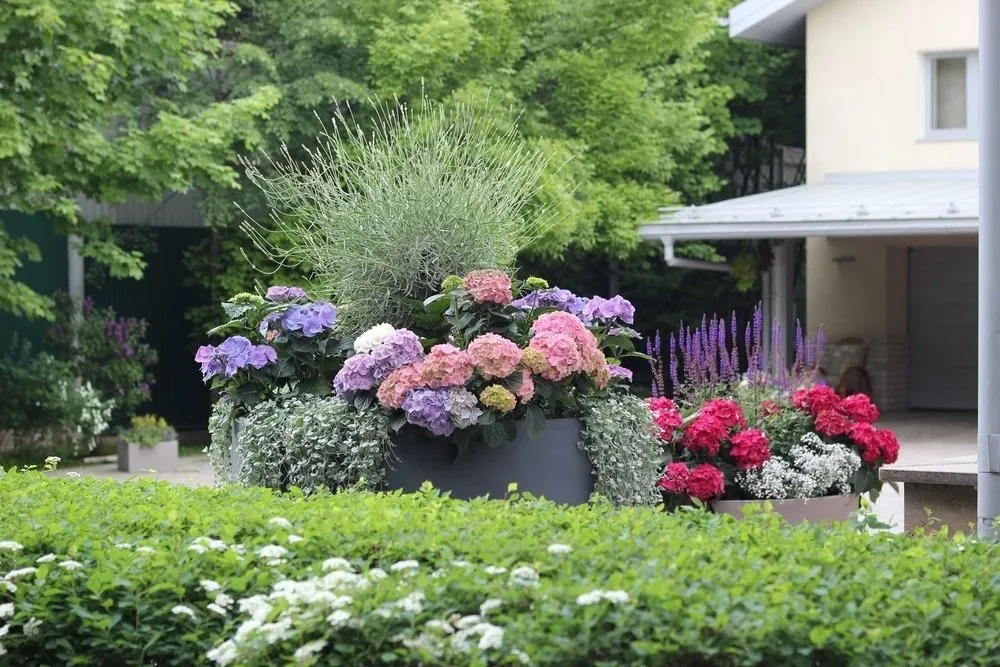 Design: Elena Bykova
Design: Elena BykovaAnnuals or summer flowers are bought in pots or trays, also flowering. Summer flowers—perfect for quickly creating a beautiful flower bed: they bloom and look decorative all summer until late autumn, unlike perennials whose blooming period is not as long.
For a quick transformation of the dacha plot, Irina recommends organizing a mobile container garden or plant wall.
What plants to choose?
Colorful varieties of carex, petunias, pelargoniums, coleus, begonias, lobelias, aliums, dichondra, marigolds, and other summer flowers look great. You can make compositions yourself or buy ready-made ones.
For a mobile garden composition, include perennials too—santolina, lavender, grasses, and even shrubs like hydrangea. If it's a plant wall, add indoor plants that grow well in summer outdoors, such as chlorophytum and ivy.
Recipe for a ready-made flower composition for a flower bed or mixboard: to keep the flower bed colorful at different times and have plants gradually replace each other in blooming, make a composition from different varieties of santolina, snapdragons, catnip, mini rose (floribunda or tea-hybrid), and niwaki.
These plants will bloom in July-August. For autumn blooming, we suggest adding the bushy astilbe to the flower bed.
How to plant correctly?
All perennial herbaceous plants should be bought in pots with a developed root system, and try not to damage it during transplanting.
It's better to cut the flowers off immediately after blooming, not wait for seeds to ripen: this is done to improve plant establishment.
Be prepared that in the first year after planting, plants will not bloom as abundantly as in the next year when they are fully established.
Annuals after planting grow well, form new buds quickly and bloom for a long time.
Planting in July is best done in the morning or evening. Prepare the soil in advance so that the plants you bring do not stand in the sun for too long. Watering is very important. It's best to mulch the soil with pine bark or larch bark right away to retain moisture: it's usually hot in this month. This procedure also prevents weed growth.
 Design: Irina Lukyanova
Design: Irina LukyanovaHow to choose planters?
Large-sized models are preferred: then the flower compositions will be voluminous and there will be an opportunity to use many plants. If you're adding perennials or shrubs, the planters need to be insulated so that plants don't freeze in winter or transplanted into the ground for the winter.
"Choose planters with automatic watering to control moisture levels, and for plant wall modules, provide drip irrigation," recommends Irina.
 Design: Irina Lukyanova
Design: Irina LukyanovaComposition of tuberous begonia, coleus, and ivy.
Composition of tuberous begonia, coleus, and ivy.
Composition of trailing begonia, coleus, and geranium.
Where to place ready-made compositions?
Place planters throughout the garden and at the entrance to the house, on terraces, balconies, and verandas. They can be left outdoors until late autumn and then decorated with evergreen plants for New Year.
A plant wall can be placed at the entrance to the house or on a fence, and decorated with it around pergolas or gazebos.
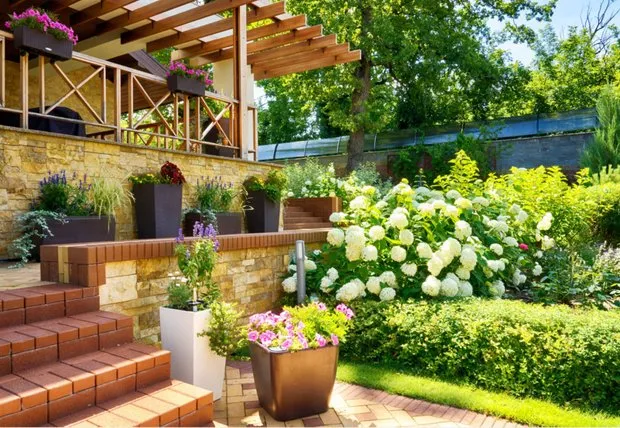 Design: Evgenia Russo
Design: Evgenia RussoEnhancing flower beds with plants
If in July flower beds or mixboards are not lush and colorful enough, it's not too late to add more plants.
Irina suggests focusing on perennials in pots that will handle transplanting well: "Lilies, astilbes, niwaki, hostas, santolina, grasses, and decorative carex are the most low-maintenance.
 Design: Julia Namestnikova
Design: Julia NamestnikovaThese can also be compact shrubs: spiraea, astilbe, kizilnik, spherical thuja, juniper, and cushion-like pines—all must be grown in pots with a well-formed root system.
To help shrubs better tolerate planting, treat them with root growth stimulants like "Kornevyn" or "Heteroauxin".
However, if you don't mind updating the flower bed annually, you can also add annuals.
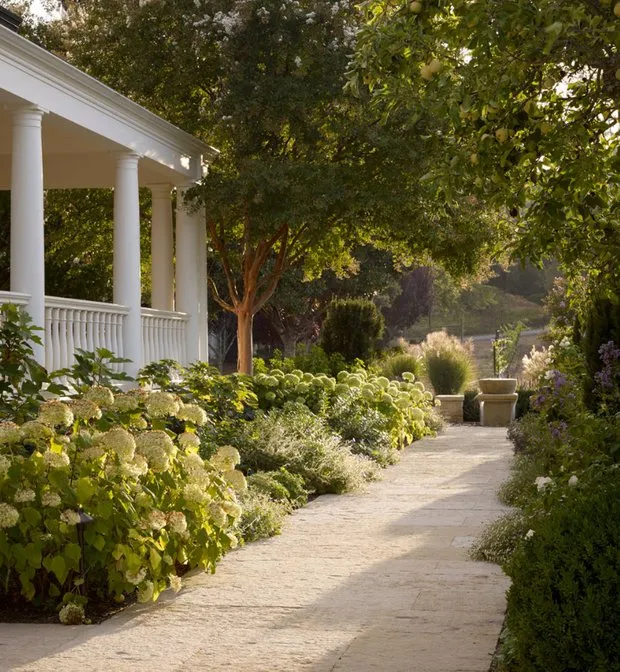 Design: Bevan Associates
Design: Bevan AssociatesSowing seeds of perennials for blooming next year
In June–early July, sow or renew seeds of forget-me-nots, anemones, and marguerites—these will bloom next spring, as well as Turkish carnations (they'll bloom the following summer). These perennials can also be used for planting in containers.
In July, sow seeds of two-year-old plants like foxglove, rose campylopus, bellflower, night phlox, and leuco.
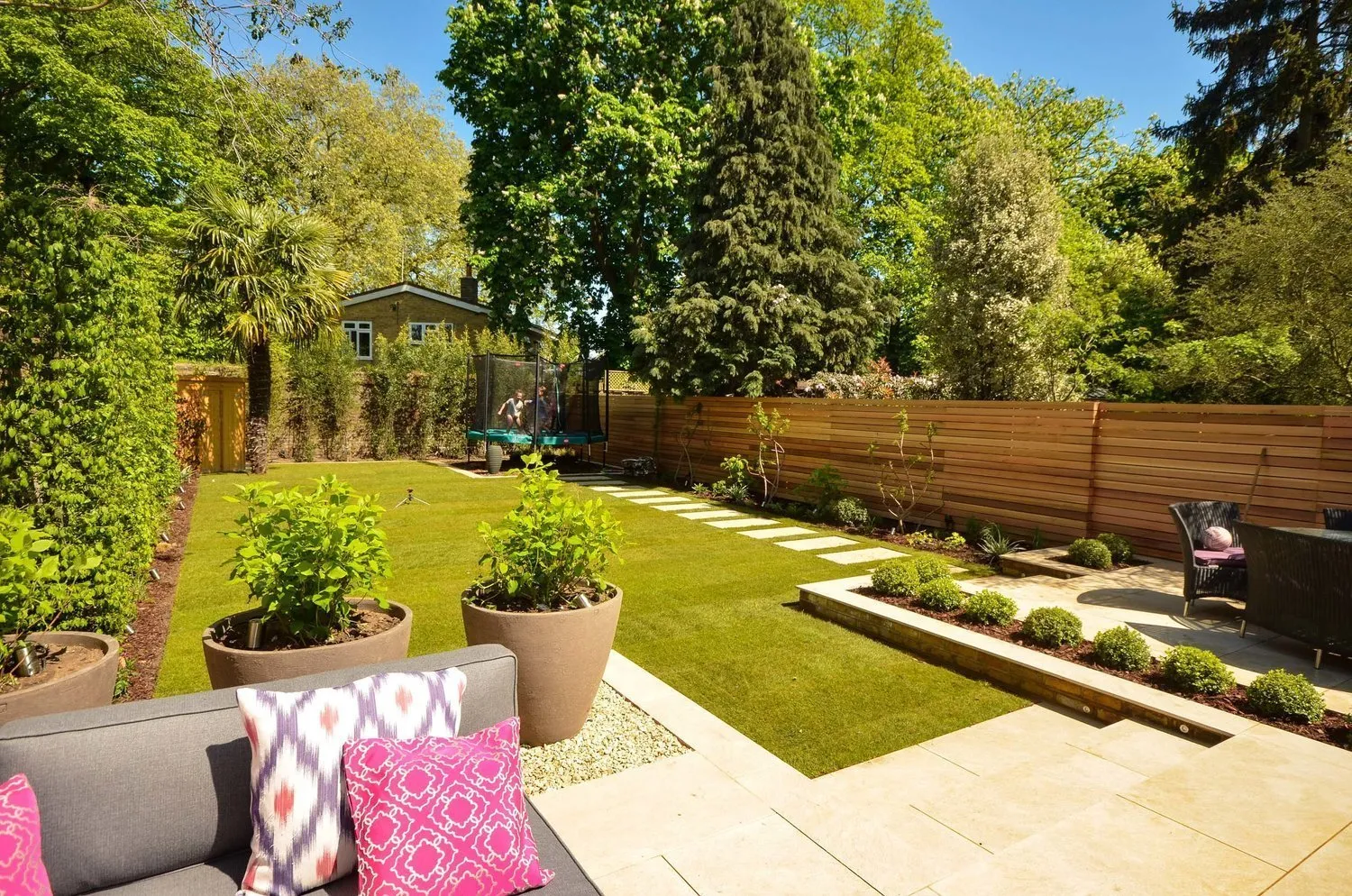 Design: Azara Landscapes
Design: Azara LandscapesPlanting shrubs and trees (but only if necessary)
"Mid-summer is not a typical time for planting saplings, but if it's urgently needed, choose container-grown plants, shrubs and trees grown in pots with a dense root system to ensure the plant survives transplantation," says Irina.
It's also important to treat the plant with "Kornevyn" or "Heteroauxin" before planting, and spray the crown with an "Epin" solution to reduce stress during transplanting and boost immunity. After planting, water generously plus mist the canopy: water should be sprayed evenly over branches and leaves.
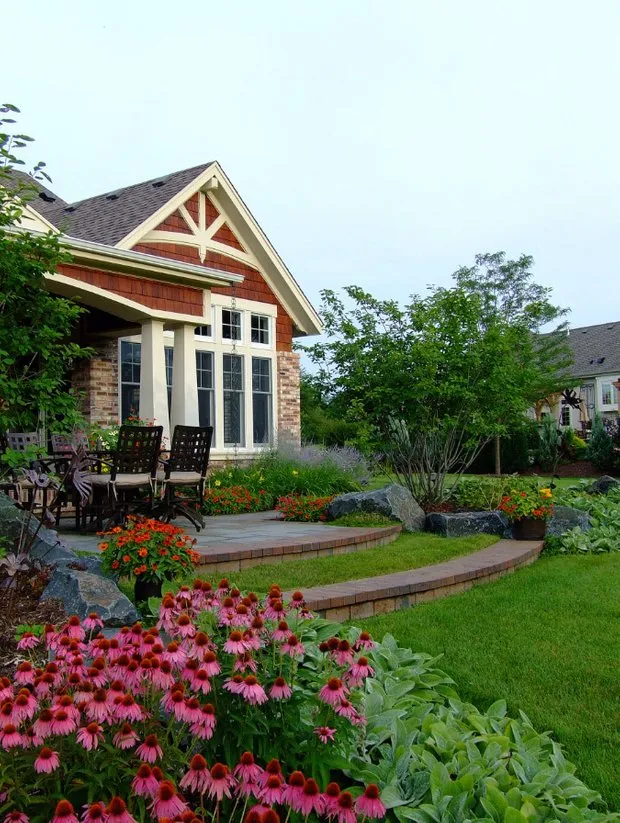 Design: Bret Achtenhagen's Seasonal Services
Design: Bret Achtenhagen's Seasonal ServicesIn the vegetable garden
Zinaida Kurchevskaya, Agronomist, Dacha Enthusiast
Usually gardeners finish planting by mid-June, but some vegetables are even better planted twice a season: for example, the autumn harvest of beets and carrots planted in July will store much longer during winter than summer harvests.
In July, you can still plant radishes, daikon, cucumbers, corn, and legumes like snap beans and early cabbage. Spinach, onions, lettuce, salad greens like cress and arugula are planted every two weeks to always have fresh greens on the table.
 Design: Eugene Garden Design
Design: Eugene Garden DesignPlanting vegetables in July is almost the same as spring planting, the key point is to choose summer varieties: they better withstand heat. Any complex fertilizers are suitable.
If you don't plan to plant anything else in the vegetable garden, I would recommend sowing seedbeds with nasturtiums or pansies: these flowers help restore the soil microbiota for a good harvest next year, plus the beds will look beautiful and colorful. Pansies, by the way, are also planted with cabbage to repel pests.
 Design: Mariani Landscape
Design: Mariani LandscapeMore articles:
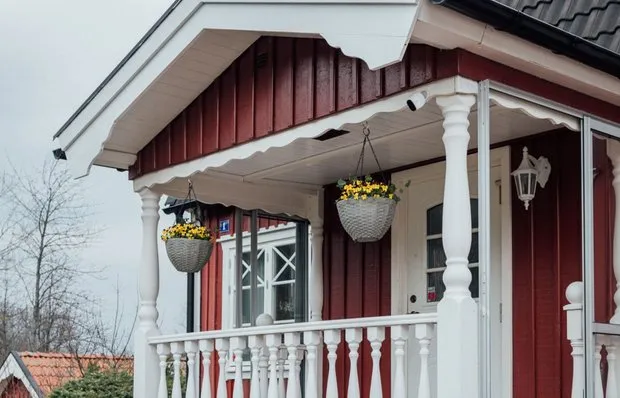 Cute Swedish Cottage with Open Balcony
Cute Swedish Cottage with Open Balcony How to Create a Beautiful Background for Home Video Calls?
How to Create a Beautiful Background for Home Video Calls?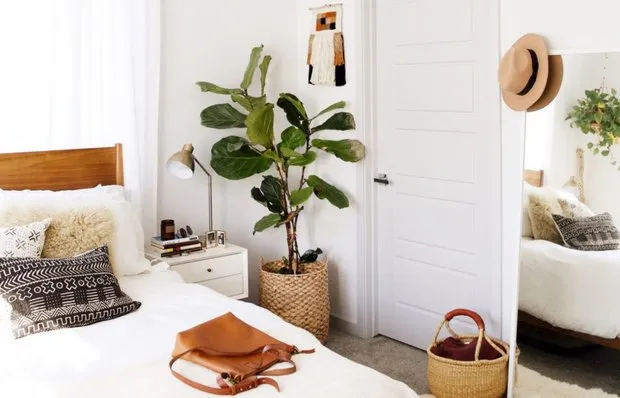 100+ Tips for Home Decoration That Help You Save Money
100+ Tips for Home Decoration That Help You Save Money Most Popular Article of 2020: 15 Cool Solutions Found in a Designer's Apartment
Most Popular Article of 2020: 15 Cool Solutions Found in a Designer's Apartment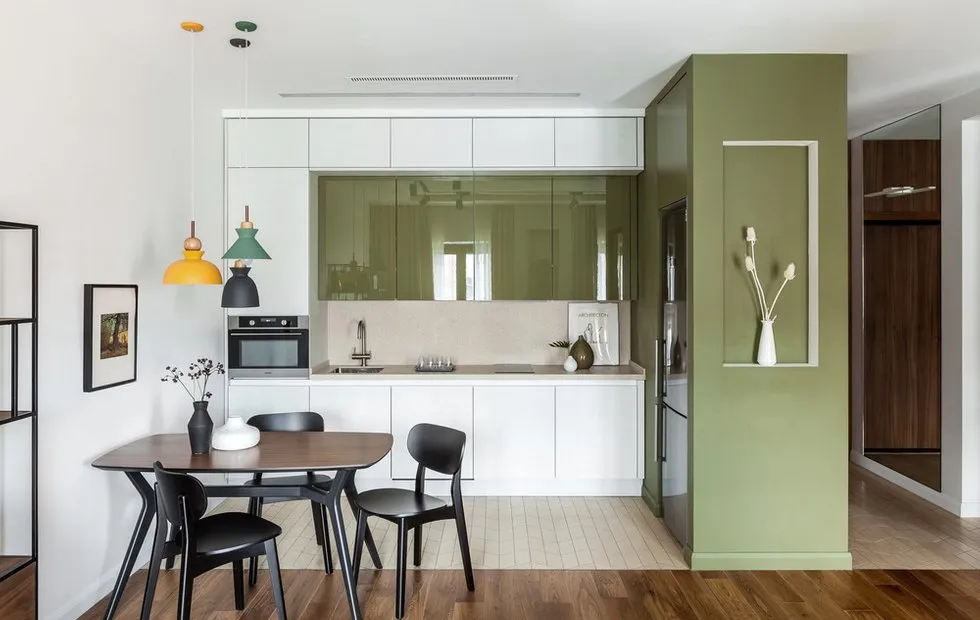 5 Kitchens from This Month's Projects That You Liked
5 Kitchens from This Month's Projects That You Liked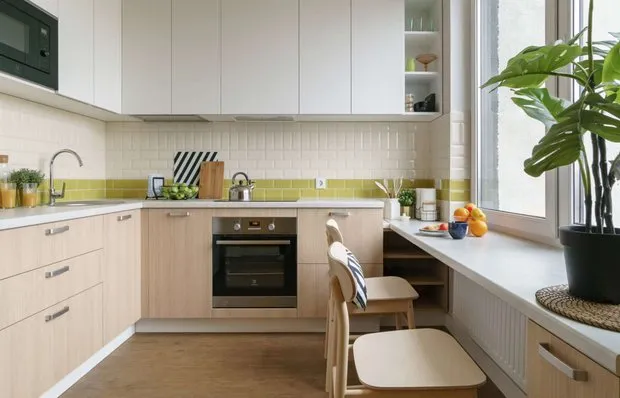 Transformations of 'Killed' Kitchens and 9 More April Hits
Transformations of 'Killed' Kitchens and 9 More April Hits 10 Design Hacks We Saw in Interior Design Projects
10 Design Hacks We Saw in Interior Design Projects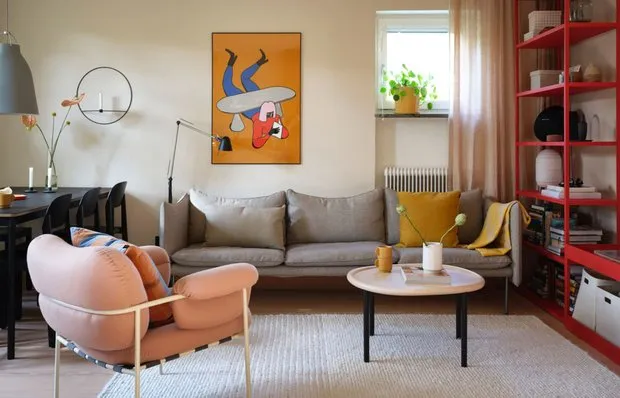 Cozy Scandinavian apartment with thoughtful storage
Cozy Scandinavian apartment with thoughtful storage